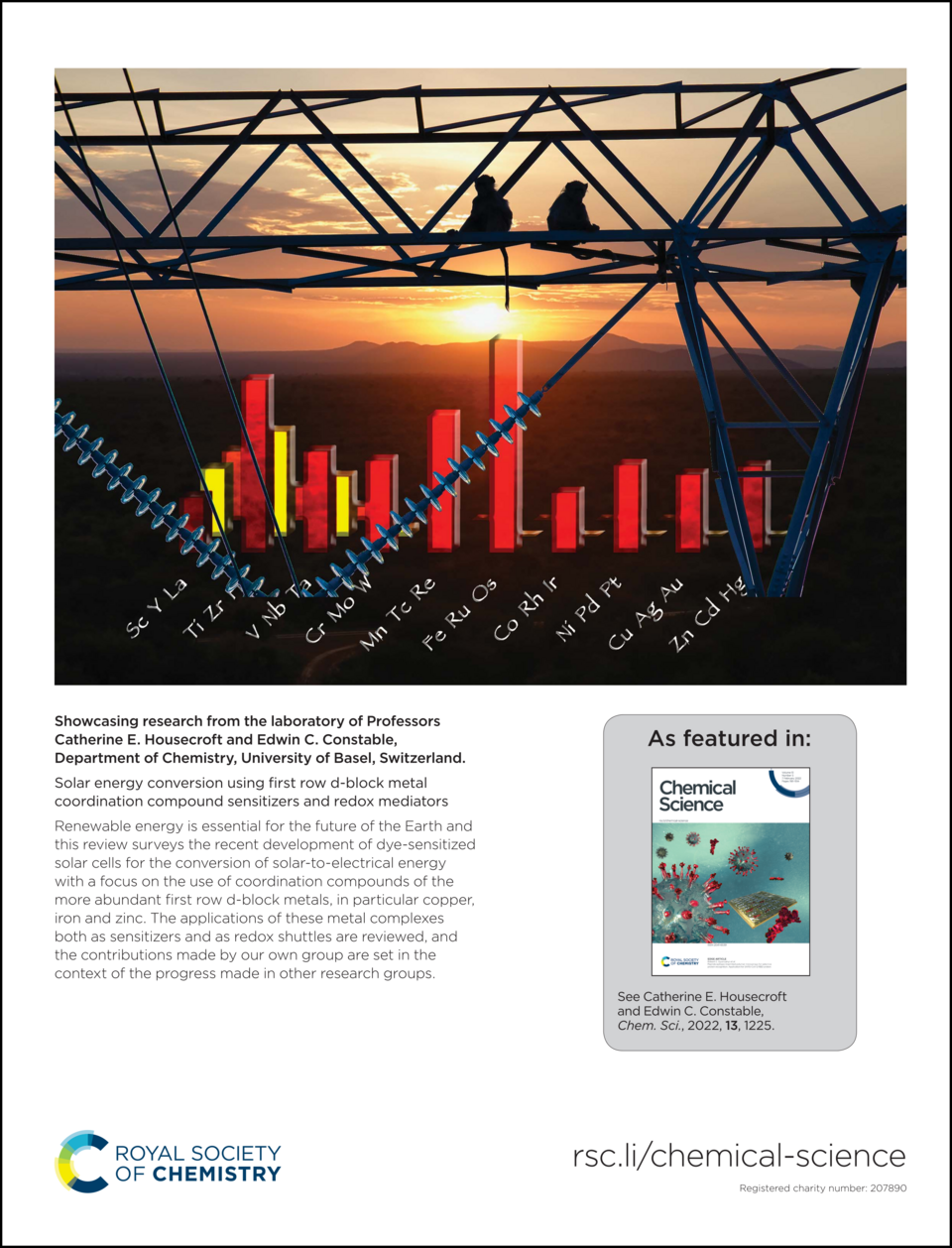Solar energy conversion using first row d-block metal coordination compound sensitizers and redox mediators

Renewable energy is essential for the future of the Earth and this review surveys the recent development of dye-sensitized solar cells for the conversion of solar-to-electrical energy with a focus on the use of coordination compounds of the more abundant first row d-block metals, in particular copper, iron and zinc. The applications of these metal complexes both as sensitizers and as redox shuttles are reviewed, and the contributions made by our own group are set in the context of the progress made in other research groups.
The use of renewable energy is essential for the future of the Earth, and solar photons are the ultimate source of energy to satisfy the ever-increasing global energy demands. Photoconversion using dye-sensitized solar cells (DSCs) is becoming an established technology to contribute to the sustainable energy market, and among state-of-the art DSCs are those which rely on ruthenium(II) sensitizers and the triiodide/iodide (I3−/I−) redox mediator. Ruthenium is a critical raw material, and in this review, we focus on the use of coordination complexes of the more abundant first row d-block metals, in particular copper, iron and zinc, as dyes in DSCs. A major challenge in these DSCs is an enhancement of their photoconversion efficiencies (PCEs) which currently lag significantly behind those containing ruthenium-based dyes. The redox mediator in a DSC is responsible for regenerating the ground state of the dye. Although the I3−/I− couple has become an established redox shuttle, it has disadvantages: its redox potential limits the values of the open-circuit voltage (VOC) in the DSC and its use creates a corrosive chemical environment within the DSC which impacts upon the long-term stability of the cells. First row d-block metal coordination compounds, especially those containing cobalt, and copper, have come to the fore in the development of alternative redox mediators and we detail the progress in this field over the last decade, with particular attention to Cu2+/Cu+ redox mediators which, when coupled with appropriate dyes, have achieved VOC values in excess of 1000 mV. We also draw attention to aspects of the recyclability of DSCs.
Read the full article here.
